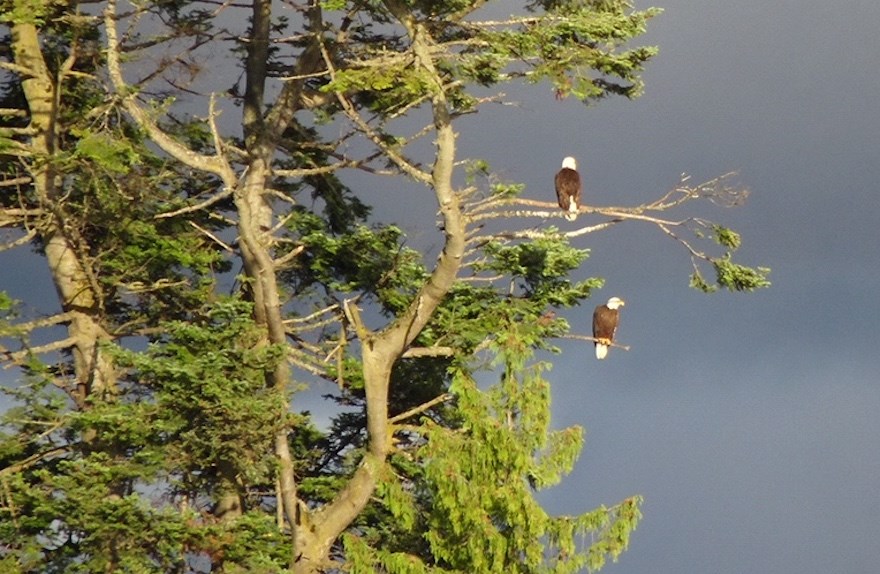In the two and a half years it took to wrangle an agreement on how to build a waterfront house overlooking Stearman Beach, several issues were stumbling blocks. One was protecting a bald eagle perch.
On the property is a grand fir. Far up its trunk were bare branches where bald eagles would patiently sit, their eyes on constant alert for prey.
In approving the development application in January 2020, the District of West Vancouver stipulated that the branches could never be removed.
Several days ago, however, the tree was trimmed. The perch is gone.
“The perch branches were virtually the only thing cut off," says District of West Vancouver Coun. Nora Gambioli, who estimates the tree is almost 50 metres tall. “The neighbours are heartbroken and it’s irreversible. You can’t glue the branches back on.”
After being contacted by neighbours on Aug. 10, Gambioli asked the district’s bylaw enforcement department to look into why those branches were cut after so many efforts were made to save them during the drawn-out development application process.
“We were pretty sure all the boxes were checked and everything was protected. We figured everything was OK,” she told the North Shore News.
In a press statement, the district says it is taking the branch removal very seriously.
“Staff are looking into the events that led up to this unfortunate error,” Friday’s statement says. “This particular tree is protected by the development variance permit for the site as well as by the district’s tree bylaw, and a permit is required to do any work on this tree, including removing limbs.
“No permit was obtained for the work, no application for a permit was made. The work was conducted without district permission or oversight.”
During the coronavirus shutdown, there have been no barriers to the permit application process. The district continues to send its arborists out into the field for inspections when applications are made.
The main reason why the construction approval process took so long is that, with sea levels rising, the province has new rules to prevent flooding. The property owners were required to build the house three metres higher than other houses in the neighbourhood.
As part of the negotiations with council, the original design of the house was revised to accommodate retention of the tree. Final approval was given on Jan. 13, 2020. The approved documents show the tree and where it’s sitting, Gambioli says. The documents also say the perch must be protected.
“My concern,” Gambioli says, “is ‘How could this have gone wrong? How can there still be such a profound ignorance on the part of someone?’ It’s stunning.”
The district’s press statement says “fines for a bylaw violation start at $500 and can be significantly higher if the district chooses to pursue the matter under the Offence Act. Once we have determined how this came to happen, we will look into each of the avenues available to the municipality and take appropriate action.”
In 2018, a builder was fined $20,000 for illegally cutting down two trees.
Gambioli says that if rules were broken, she’ll push for strict penalties.
“I’m on the heritage advisory committee. We’re always talking about old houses. This is natural heritage that’s been destroyed. It’s almost no different than demolishing a building.
“It’s small in the scheme of things but this can’t be done. We’ve got to be better.”
Martha Perkins is the North Shore News’ Indigenous and civic affairs reporter. This reporting beat is made possible by the Local Journalism Initiative.



